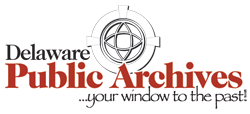Zwaanendael Club
SC-161: This building was constructed in 1898 by the Sussex Trust Title and Safe Deposit Company. It was opened in October of that year, and continued to serve as the Lewes branch of the bank until being replaced by a new structure on Second Street in 1911. The property was subsequently sold, and for a […]
The Brick Hotel
SC-139: This locally famous landmark was constructed in 1836 by Joshua S. Layton and Caleb B. Sipple, builders of the Sussex County Courthouse across the Square. It replaced a frame Public House that had stood on the site. County courts were held here during the construction of the Courthouse 1837-39. The accommodations and hospitality of […]
Maull House
This house is believed to have been built by Samuel Paynter, a carpenter who purchased this property in 1737. Following its completion, the house and surrounding land were sold in 1741 to Luke Shields, a prominent bay and river pilot. The close proximity of the bay and safe harbor of nearby Lewes Creek made this […]
Byrd’s African Methodist Episcopal Church
In the early 1890s, Clayton was home to an increasing population of African-Americans, many of whom were railroad workers. Byrd’s African Methodist Episcopal (A.M.E.) Church was built in 1894 to accommodate this growing community who previously had to walk several miles to Mount Friendship Church for services. The land was purchased from Willis C. Dickerson […]
Rescue House Of Prayer Temple of Deliverance
KC-104: Organized on December 9, 1877, the Felton Methodist Protestant Church originally held services for several years in the Knights of Pythias Hall. In 1880, a parcel of land on High Street was deeded to the church trustees by Job Butterworth and his wife Elizabeth for the purpose of constructing a new church. The building […]
Hangar 1301
KC-68: Constructed in 1944, Hangar 1301 served as the headquarters and engineering facility for the 4146th Base Unit from 1944 to 1946. Highly secret testing and development work was done here on air-launched rocket weapons. Aircraft used in testing ranged from P-47 Thunderbolts to four-engine bombers including B-17 Flying Fortresses and B-24 Liberators. Even single […]
Brecknock
In 1680 Alexander Humphreys received a warrant from the county court for 600 acres of land which he called Brecknock. The tract is believed to have been named for a shire of Wales. A milling operation was established here in the 1740’s. For nearly two centuries local farmers brought their grain to this place, known […]
Rockland Mill Village
NCC-224: The site of the Rockland Mill Village is one of the earliest and longest-functioning mill seats on the Brandywine. Grist milling commenced c.1724 and was replaced by a fulling and cotton mill c.1733. Paper was the primary product of the mill beginning in 1849 and the mill produced rag paper, fine book paper and […]
Penn Farm
The 112-acre Penn Farm is the last surviving farm of the 1,068-acre New Castle Common. William Penn, Proprietor and Governor of Pennsylvania, made his warrant in writing under his hand and seal in October 1701, granting the New Castle Common “to lye in Common for the accommodation of the Inhabitants of the Town of New […]
Old Fort UAME Church
NCC-184: In 1813 a group of African-American Methodists led by Peter Spencer formed an independent denomination that came to be known as the African Union Church. It was the first incorporated religious body in the United States controlled entirely by African Americans. Early meetings of the Christiana Bridge congregation were likely held at private residences […]





